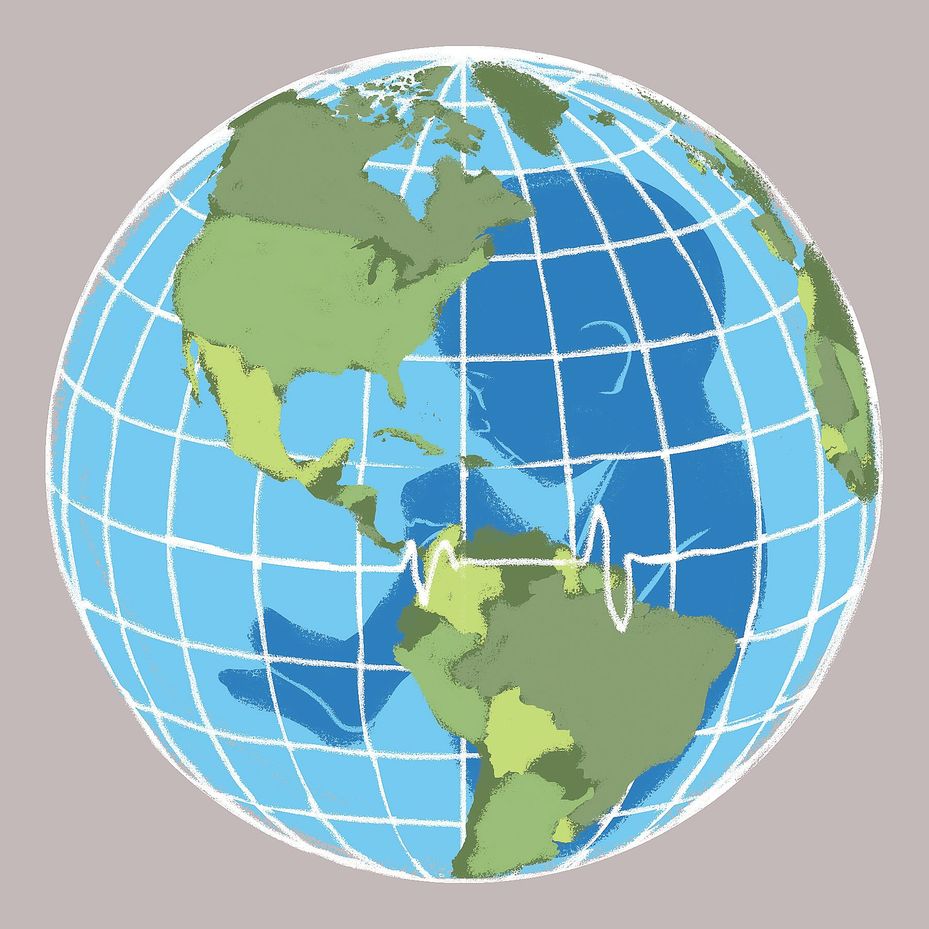[ad_1]

OPINION:
The world population hit 8 billion people in November.
A tragedy or a triumph?
Neither. It depends on how you look at it.
As some wise terrestrial sage once penned: “It is what it is.” Or, as a more maritime mystic might have mused: “The glass is half empty or half full, depending on your perception.”
Assuming that the glass is half full, let’s celebrate by bringing all 8 billion of us to a Global Gala Population Conference at one convenient location. And let’s give them plenty of space to celebrate and feed them enough festive food.
But what location could handle such an enormous crowd and lodge and feed them besides?
A simple bit of counting can be used to figure out how much space is needed to gather such a celebratory crowd.
First, assume that 20 feet by 20 feet square space would be sufficient for each person to party in their own special way. With each of the 8 billion occupying their own ample 400 square feet of space, how much total area would be required to comfortably accommodate all these distinctive souls?
To answer this question, multiply 8 billion by 400 square feet to get an area of 3.2 x 1012 square feet required to locate all those people.
That’s 3.2 with 12 zeros behind it, or 3.2 trillion square feet! Where on Earth is all that area?
Searching the web, we locate New Mexico, a state with 121,590 square miles, which converts to 3.4 trillion square feet. Plenty of space for everyone to party hearty!
But what about sustaining all those people?
Within and beyond U.S. borders, there has been enough food to keep up with the entire global population for at least the past 10 decades, along with plenty of raw material and energy resources.
So why are so many starving to death and a billion poor souls living without reliable electricity?
There are reasonable explanations for abject poverty — such as excess population density in topographically and climatologically unfavorable areas. Beyond what’s reasonable, however, there are more nefarious explanations for how lives are lost on a planet of plenty.
Topping the list of what keeps many in misery may very well be ruling-class elites who lord it over the needs of the populace they supposedly serve. Besides autocrats who purposely target political opponents, there are privileged politicians who spotlight showmanship with little performance to ease privation.
And there are demonstrably ineffective programs — like the long-running “war on poverty” — that just become empty promises. Political hand-wavings frequently trump everything. Compassion goes by the wayside, while the poor are confined to perpetual misery.
In 1968, Stanford University professor Paul Ehrlich predicted in the popular book “The Population Bomb” that the world population was unsustainable and headed for widespread famine and poverty at its present growth rate. In the late 1960s, the population logged in at about 3.6 billion people. With an ever-increasing number of people, Mr. Ehrlich expected a worldwide collapse of economic and social systems within a couple of decades.
He got the idea of “too many people” after witnessing the great masses of people on the streets of Delhi at the time. The late political satirist P.J. O’Rourke quipped that there weren’t too many people in the world, rather, there were too many of the wrong kind of people.
Regardless, the worldwide economic and social collapse has been prevented because of subsequent technological improvements, energy exploration and generation, and agriculture. In fact, the application of such advancements has generally improved the lives of the global populace since the 1960s.
This success can continue and spread if world leaders regard their constituents not as the great unwashed but rather as precious souls worthy of dignity, respect and compassion. The focus should be on raising everyone’s standard of comfortable living through the wise dispensation of the resources readily available to all.
This can be accomplished not only in the U.S., but also in countries throughout the globe. All 8 billion people are worthy of dignity and respect. And compassion can be delivered via good nutrition and energy that’s clean, reliable, abundant and affordable.
• Anthony J. Sadar is an adjunct associate professor at Geneva College in Beaver Falls, Pennsylvania, and co-author of “Environmental Risk Communication: Principles and Practices for Industry” (CRC Press, 2021).
[ad_2]
Source link
(This article is generated through the syndicated feeds, Financetin doesn’t own any part of this article)
